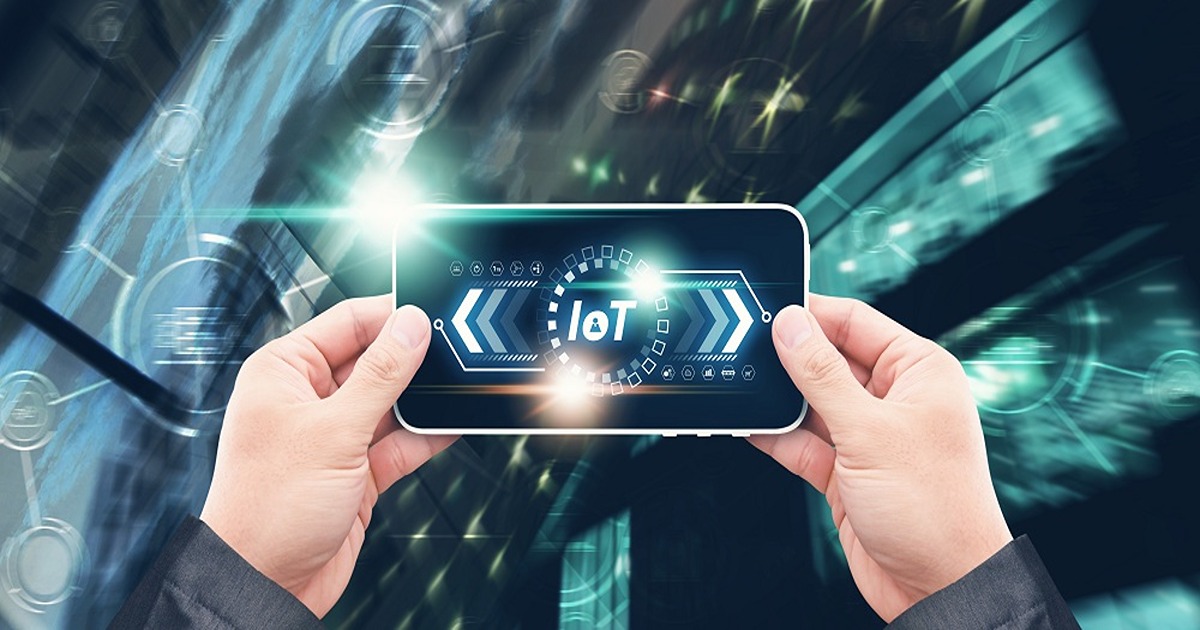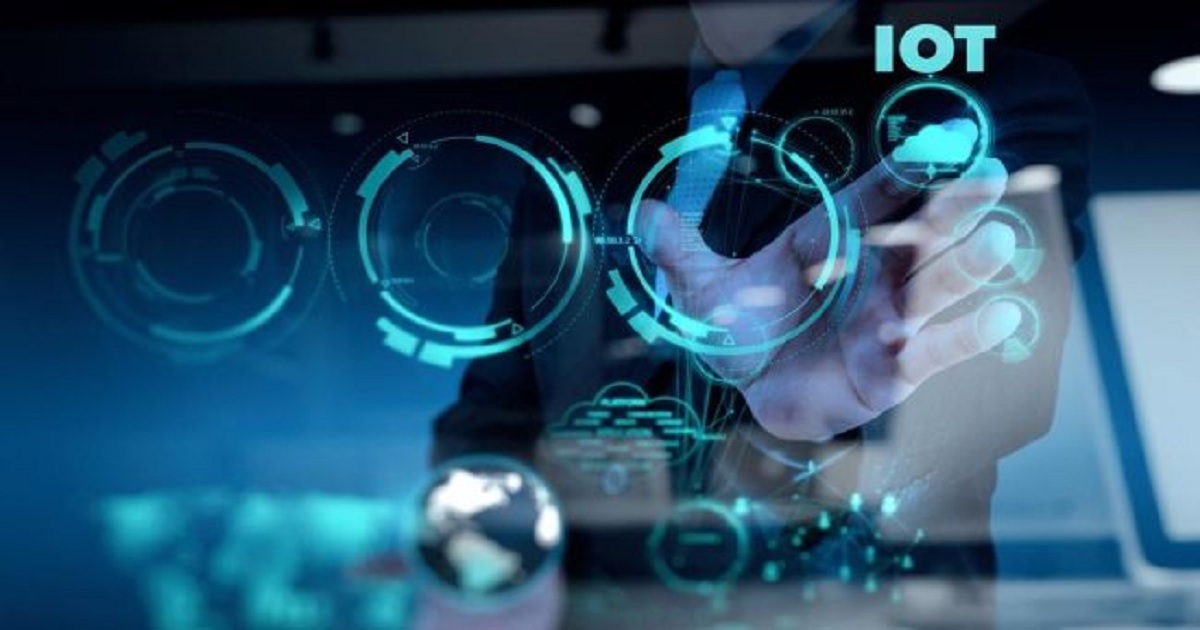
IoT Security
Article | October 11, 2023
For businesses to grow, they must be armed with the right technology and implement the right strategies to get a high return on their investments. With an IoT strategy, you can successfully make sense of the high volumes of data generated. IoT is about having devices with sensors communicate with other devices over the internet and share real-time data or parameters to maintain healthy system processes. Sharing and transferring data in real time over the cloud creates a lot of data that needs to be carefully managed.
Not having a streamlined method to control and manage the volume of data to capture, send, transmit, and receive over the cloud poses many space constraints as the data piles up quickly. Furthermore, deciding what data to keep and what to discard, how long you need the data, and for what purpose are all critical. Some standard IoT devices include sensors, lights, alarms, and cameras that a smartphone can control.
Learn about the importance of data management in establishing an IoT framework below.
The Top Reason for Establishing an IoT Framework Needs Data Management
Learning from past data trends to make future decisions in an IoT framework is critical. Data management acts as a layer between the IoT devices generating the data and the software accessing the data for analysis and services. It helps review, analyze, and navigate the massive amounts of structured and unstructured data. Defining which actions trigger responses to create data in your process is necessary to monitor your product and services and to keep your customers satisfied. In an IoT framework, managing the large amounts of data that are generated and collected means learning from the past and predicting what will happen in the future.
Why is Data Management for the IoT Framework Crucial for Medium and Large Enterprises?
Creating a better product is essential to add more value to your product offerings and avoid recalls, keeping your brand reputation at stake. The more data, the deeper the analysis, and the more refined the product, the greater the need to manage large amounts of data efficiently.
The future of IoT data management is promising when it comes to improving all aspects of your business processes, mainly controlling the automation and manufacturing processes and software triggers. Check out the in-depth benefits of data management in IoT.
Data management in IoT helps conduct a field test of your IoT products before deployment.
Improve the uptime of your business production lines and equipment.
Perform seamless decision-making for planning, scheduling, and execution systems to meet the changing customer and market demands using accurate and current data.
Data management helps efficiently deploy IoT solutions such as enterprise resource planning (ERP), enterprise asset management (EAM), and manufacturing execution systems (MES) in manufacturing businesses.
Data management helps remote monitoring of automation systems and robotic systems in industrial IoT needs current data and management.
Improve production flexibility and responsiveness by welcoming smart manufacturing using IoT data management.
When it comes to the data management of IoT devices, different types of data management systems take care of structured and unstructured data.
8 Data Management Systems for Your Enterprise IoT Devices
IoT device management means registering, organizing, monitoring, and remotely managing IoT-connected devices at scale. Various cloud architectures with different data management systems help with efficient IoT device management. In addition, equipment data, sub-meter data, and environmental data help track the performance of your IoT devices through IoT data collection. Let's find out how data management systems for IoT devices would help develop an IoT strategy for your large enterprise.
IoT gateway device management involves many steps in keeping your operations healthy and maximizing uptime. These are provisioning, authentication, configuration, control, monitoring, diagnostics, software updates, and maintenance. In addition, data management systems aim to make data available for analysis in the long term. The different data management systems are as under:
Querying
Production
Collection
Aggression/Fusion
Delivery
Pre-processing
Storage, updating and archiving
Processing or analysis.
These data management systems capture, organize, store, retrieve, and analyze data when required. Sorting out the data management in IoT will initiate your internet of things database scalability. An IoT data lifecycle is built around the data management systems in the data flow, which acts as guidelines or checkpoints for a smooth data flow across your IoT platform. Let us unfold them below.
Seven Guidelines for Cost-Effective IoT Data Management
• Querying: Accessing and retrieving data for temporary monitoring. For example, you could ask IoT devices or sensors for data in real time to learn more about trends and patterns.
• Production: Sensing and transferring data by the "things" or IoT devices in an IoT framework is the data production phase. Pushing the data to the cloud network and the IoT database servers and reporting it to the interested parties. This rich data has different formats such as audio, video, or image content, and is time-stamped and geo-stamped.
• Collection: Collecting and retrieving data for a predefined time interval and sharing it with the governing components within the gateways is a part of the collection. Filtering out valuable data and compressing it accordingly helps seamless data transfer. It is also a part of data collection.
• Aggression or fusion: Part of the aggression is real-time data transmission across the network to increase the rate of data streaming over the limited bandwidth. It pulls together information from different points of contact and reduces the amount of information that needs to be stored and sent.
• Delivery: Collating the data from multiple touch points across the IoT framework and summing it up for the final responses is a part of the data delivery management system. Making data ready for permanent data storage is also a part of it.
• Preprocessing: Removing redundant, missing, and incomplete data and making all the data unified is a part of preprocessing. Data cleaning is also one of the preprocessing methods applied to data mining.
• Storage, Update, and Archiving: Storing data in an organized way for long-term offline usage or big-data systems is a part of the storage data management system. It can be decentralized or centralized as per the required capabilities.
• Processing or Analysis: Retrieval of stored packets of data accessed for an efficient analysis is a part of data processing or analysis in a data management system.
Whenever handling large amounts of data, an efficient data management system will solve numerous problems concerning your IoT strategy, as discussed above. Find out exactly what can keep you from implementing IoT.
5 Growth Challenges in Data Management for IoT Technology
High Initial and Ongoing costs:
Upgrading the hardware and software infrastructure that is already in place, hiring IoT-trained staff, and building an IoT infrastructure will all require upfront and ongoing costs.
Vulnerability:
Your IoT security strategy is a critical aspect of your IoT platform strategy. Multiple data points for structured and unstructured data captured, transmitted, stored, and retrieved by software come with security risks.
Procuring Quality Hardware:
Finding compatible hardware for your requirements and building an infrastructure around them can take a while regarding decision-making for scalability. In addition, hardware must remain supportive of the quick adoption of future software innovations.
Installation and Upkeep of Hardware Infrastructure:
Setting up a complex IoT strategy with the implementation of IoT data management, infrastructure, security, and more takes time and expertise. One of the other big worries is keeping the hardware infrastructure in good shape so that security can't be broken.
Constraints on Scalability and Agility:
The humungous IoT data traffic poses a severe concern for appropriate control of the data storage, retrieval, analysis, monitoring, and everything aligned with IoT data management. Also, the fact that IoT data doesn't last as long as other types of data is a risk to the way data flows and is collected.
Now, let us figure out how to implement IoT that aligns with your business objectives.
How to Implement IoT in Line with Your Business Goals
A complete analysis of your immediate and long-term business objectives is critical as it helps decide which data to keep and which to discard after how much time. Every byte of data you hold and analyze comes with a cost for storage, retrieval, and security, which can be a barrier to implementing IoT for your business. Identifying IoT data collection helps you align your IoT implementation strategy with your business objectives. Here are a few ways to address your implementation of IoT.
Consider the use cases of IoT data management as per the processes involved in your business.
Implement security protocols for encryption and restricted access as per the type of business data.
Organize training for the existing workforce and hire skilled professionals in IoT.
Understand your business's data requirements, including the data collection process.
Allow enough budget for IoT infrastructure and resources.
Consider the design and development of the product as per the customer's behavior.
Consider the impact of the environmental conditions affecting your business.
Measure real-time performance metrics using a suitable IoT sensor to streamline your process.
Take automated decisions with the help of AI once IoT sensors recognize the performance gaps.
Choose the right IoT platform that defines how you communicate and handle data.
Understand that IoT implementation is a complex process and needs commitment.
Collect only the important data and statistics for a smooth workflow and to lower the cost of putting IoT into place.
Taking into account where your storage and production lines are located, choose the best ways to gather, organize, and analyze your data.
Use cold path analytics for the long term and hot path analytics for real-time data storage.
Building infrastructure with scalability in mind will help small businesses grab market share quickly and efficiently. As a result, medium-sized enterprises will find prominence in their industry. Using data visualization in business intelligence allows for rapid optimization of your IoT devices and for controlling data management costs in the long run without negatively impacting performance. Explore more about IoT data visualization down below.
Role of Data Visualization in IoT for Business Intelligence
With IoT data visualization, you can optimize business processes by applying visualization business intelligence to get your business ready to scale. Discover the role of data visualization in your IoT strategy.
Make sense of the data you've collected or saved.
Patterns and trends should be recognized.
Check the data for inconsistencies and errors. The output should then be visualized over time for analysis and monitoring.
IoT infrastructure and devices improve performance and streamline the IoT data flow.
Analyze real-time data correlations across multiple business verticals using the IoT communication platform.
Make future decisions based on the data captured in the past.
Get actionable insights on customer behavior and
Identify the factors impacting your business.
Once you identify the gaps in business processes, you can make changes to the process and further improvise. Creating an optimized workflow and detecting errors and faults in a process early are the primary goals of data management in an IoT strategy. Tackling vulnerabilities in data security and data redundancy helps the cost-effective implementation of IoT for small businesses, opening avenues for scalability. With IoT data management, you can also optimize your products to make customers happier and get a bigger share of the market, which is great for your business's growth.
Summarizing
With secure access control, encryption, software updates, endpoint security, and communication protocols in place, the relentless power of data visualization for analyzing and monitoring the captured data has proved to be unmatched. Bringing resilience and giving a rapid boost to the scalability of your medium and large enterprises is now becoming a norm with organized IoT data management.
FAQs:
• What is the most significant benefit of IoT?
IoT helps devices or sensors report real-time data for smooth interconnected production operations. In addition, IoT keeps healthy functions throughout and minimizes the turnaround time for troubleshooting and maintenance.
• What are the three types of IoT?
Depending upon the needs from time to time, the three types of IoT include short form, medium form, and long form. The short form meets immediate needs, the medium form meets future needs, and the long form keeps the system running smoothly.
• How does data analytics help IoT?
Effective process optimization is possible by analyzing the data generated in an IoT framework. It helps boost efficiency, and connectivity, cut costs and unlock scalability.
Read More

IoT Security
Article | June 28, 2023
Three out of four IoT projects are considered a failure, according to Cisco. This is troubling but even more so when Cisco also found 61 per cent of companies say they believe they’ve barely begun to scratch the surface of IoT can do for their business? Businesses believe in the long-term value offered by integrating IoT into their business plan, however, they lack the knowledge of what is required to ensure the success of such a complex project. By studying past failed projects, technology leaders can gain a better understanding of why they failed and what they can do differently when evaluating and undertaking new IoT initiatives.
Read More

IoT Security
Article | July 5, 2023
If you’re struggling with creating a value proposition in volatile markets, you’re not alone. According to Neil Patel, 40% of marketers struggle to acquire leads by traditional marketing methods. As competition grows in each industry, even fairly monopolistic markets like tech are seeing rising competition in all areas.
To combat market uncertainty, as well as stand out amongst your competitors, you need a market strategy that not only offers a direction but actively targets your goals. A market strategy is your go-to plan when things get rough and it is a map for when the waters are calm. Moreover, marketers with a documented strategy are 313% more likely to report success.
We’re sure you already have a market strategy that is just right for you. But have you considered if it can be refined further? Thanks to emerging technologies like IoT, we now have access to the most mundane customer decisions that are taken on a day-to-day basis. This data is your ticket to a better market strategy without having to spend a bomb.
This is how you can refine your market strategy with the help of IoT.
Data-driven Decisions
The Internet of Things has offered us insurmountable amounts of consumer data. A caffeine brand can now access information such as what time consumers have coffee, whether it is at home or office, what flavors they prefer, how much they’re willing to spend on coffee, and what other alternatives they consume. This kind of data, collected on an IoT device such as a coffee machine, is instrumental in making marketing decisions. If you know that your consumer prefers to have coffee at work in peace rather than in a rush at home, you can target offices in the area with your product rather than targeting individual consumers.
IoT offers you the right information to make the right decisions. But you can also leverage this data to drive your market strategy. In the above example, the marketing team can account for campaigns geared towards workplaces based on the available data in the budget. Data-driven strategies prove to be more effective than otherwise, and as marketers, you must absolutely leverage any IoT data that may be relevant.
Respect your Customers
While IoT offers marketers a truly astounding amount of data, not all users are aware of what data is being tracked. This raises concerns for privacy and security among the users. Even though most of the users waive their rights to withhold the information when signing into an app or wearables software, they are not always comfortable sharing certain data.
As marketers, it is important to keep your practices ethical and legal. Using consumer data may be completely legal, but it is best not to offend your customers by overt use of data that they aren’t comfortable sharing. Make sure that the usage of data in marketing campaigns and strategy is limited to what data has been consciously shared by your consumers. This will bolster your goodwill, as well as make your customers trust your brand.
Offer Valuable Solutions
With the advent of Big Data and AI technologies, the internet of things is turning over a new leaf. As there is a vast amount of data that can be processed fast with AI, marketers can now target individuals rather than households or groups. With precise data available over consumer decisions and actions, it is possible to know if there are any unlikely customers that you have been ignoring so far.
IoT allows you to not only target these customers but also solve their problems. If we continue the caffeine example, the connected coffee machine can tell you when the coffee is about to be over, this can send you reminders to buy coffee, or in case of further automation, place an order on Amazon on your behalf. These solutions can be now hyper-personalized to suit individual needs through IoT.
IoT Based Campaigns
Your market strategy will have to account for campaigns throughout the year, but if you’ve noticed closely, the only marketing campaigns that gain significant traction are the ones that have a ‘wow factor’. A lot of marketers mistake the wow factor to be a subjective preference that customers have but it couldn’t be further from the truth. The wow factor is simply the effect produced when a business goes above and beyond to meet customer needs. IoT offers us the resources required to manufacture the wow factor in every single campaign.
A great example of this phenomenon is beacon marketing. Beacon marketing is considerably new in the marketing industry and uses Bluetooth technology to transmit information to nearby mobile devices. It is heavily used in retail across the globe and giants like Target and Walmart are already using the technology to market its services. Walmart places beacons in its lights across its stores and sends offers to its customers based on their location. It not only personalizes the shopping experience, but also saves a large amount of electricity bill for its stores.
Target Existing Customers
Many times, in a bid to appease new customers, marketers often forget about their existing customers. Your existing customers already know you, have tried your product or service, and are clearly interested in the product. A good product or service is often enough to keep the customers returning, but with the current levels of competition, customers often find themselves wondering if they should try new things. As a marketer, all you need to do is deter your existing customers from straying. You can do this by either providing an unparalleled service, which is quite unlikely in today’s market, or you give them a reason to stay.
Thankfully, targeting existing customers is much easier than targeting new ones. You already have their data over their preferences and habits. If you know that a certain firm updates their applications every second quarter, you can send them offers just before the second quarter starts and remain fresh in their memories when they decide to make the decision.
Allergy medication Zyrtec leveraged IoT when targeting their existing customers with a voice-enable application. Its users could just ask the application about the daily allergens and pollutants in their area so they could prepare ahead. The app offered a powerful solution to its users while making great use of its brand image and retaining almost all of their existing customers.
Leverage New Technologies
We have already discussed several complementary technologies to IoT that can help you make the most out of your market strategy. AI and Big Data are some of the strongest allies for IoT that can help change the norms across industries. But even limited technologies like voice-enabled applications, QR scanners, beacons and so can open up a lot of opportunities for marketers.
Consider adopting some of these technologies such as geofencing which are inexpensive and effective at the same time. Burger King is a great example of using geofencing for marketing. Geofencing is a technology wherein you can transmit messages or information to mobile devices within a certain area. Burger King set up their geofences across all McDonalds in the UK and as soon as anyone entered within a 500 m radius of a McDonald’s outlet, they received Burger King coupons and directions to the nearest store.
Case Studies
There are a lot of examples of IoT being used to enhance strategies or campaigns. Some of these examples are given below.
Diageo, a whisky brand in Brazil innovatively used IoT to run a father’s day campaign. They encouraged men to buy whisky for their fathers and placed a QR code on their bottles. Once the bottle was received, the fathers could scan the code which would play a personalized father’s day message by their sons. This concept was so loved by people in Brazil that Diageo saw a 72% sales uplift in the two weeks leading up to Father’s Day.
South East Water, CRM leveraged IoT by building an end-to-end IoT ecosystem powered by IBM’s Maximo. This helped them roll out an app that offered near real-time insights into customer requirements for over 80 engineering teams. This alone helped them ensure higher customer satisfaction and accelerated access to critical reports by 99 percent!
Uber and Spotify rolled out an IoT campaign together wherein you could access your Spotify playlists through the Uber app and once you were in an Uber, you could play whatever you liked through the app and it would play on the car’s speakers. This increased customer satisfaction for both Uber and Spotify users.
There are several examples of using IoT in marketing campaigns, and there is never a dearth of ideas. However, in order to appeal to your unique customer base, you need to innovate your product with IoT.
Frequently Asked Questions
What is the IoT strategy?
IoT Strategy refers to an organization’s strategy to inculcate IoT in their business, whether as a marketing tool or as an integral part of the process.
How does IoT affect the marketing industry?
IoT offers a lot of insights and resources to marketers which helps them target their customers better and optimizes any marketing efforts, thereby effectively obliterating traditional marketing practices.
What is the best internet of things marketing strategy?
There is no one IoT marketing strategy that fits all businesses. Each business needs to identify its customer requirements and strategize accordingly.
{
"@context": "https://schema.org",
"@type": "FAQPage",
"mainEntity": [{
"@type": "Question",
"name": "What is the IoT strategy?",
"acceptedAnswer": {
"@type": "Answer",
"text": "IoT Strategy refers to an organization’s strategy to inculcate IoT in their business, whether as a marketing tool or as an integral part of the process."
}
},{
"@type": "Question",
"name": "How does IoT affect the marketing industry?",
"acceptedAnswer": {
"@type": "Answer",
"text": "IoT offers a lot of insights and resources to marketers which helps them target their customers better and optimizes any marketing efforts, thereby effectively obliterating traditional marketing practices."
}
},{
"@type": "Question",
"name": "What is the best internet of things marketing strategy?",
"acceptedAnswer": {
"@type": "Answer",
"text": "There is no one IoT marketing strategy that fits all businesses. Each business needs to identify its customer requirements and strategize accordingly."
}
}]
}
Read More

Article | April 13, 2021
For businesses, the transformative power of IoT is increasingly significant with the promise of improving operational efficiency and visibility, while reducing costs.
However, IoT does not come without risks and challenges. While concerns over security and data privacy continue to rise, the lack of IoT standards remains one of the biggest hurdles. The increasing number of legacy, single-vendor, and proprietary solutions cause problems with disparate systems, data silos and security gaps. As IoT successes become more dependent on seamless interoperability and data-sharing among different systems, we want to avoid the scenario of a fragmented market with numerous solutions that simply don’t work with each other.
Read More